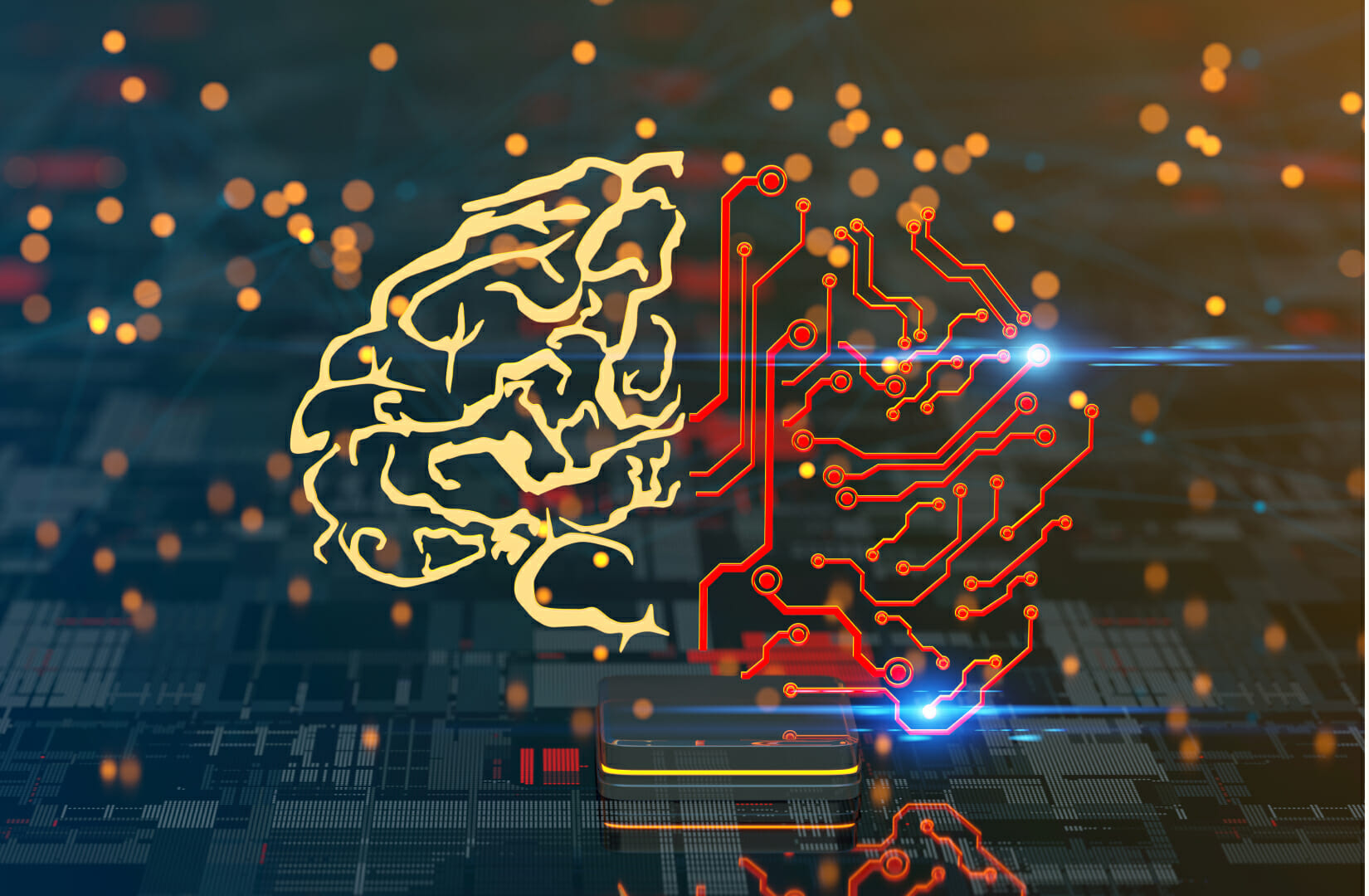With the massive growth of big data and advanced technologies such as IoT, the volume and complexity of modern data sets have made them difficult to analyze with traditional business intelligence (BI) tools.
Both machine learning and deep learning have become critical for solving new challenges across several industries. But what are the distinctions between the two practices, and what do these differences mean for your company?
We’ll take a closer look in this article, but generally speaking, machine learning is a type of artificial intelligence (AI) that uses algorithms to learn from data. Deep learning (DL), on the other hand, is a type of machine learning (ML) that uses artificial neural networks to mimic how the neurons in the human brain make decisions.
Here’s how the two disciplines differ in greater detail.
What Is Machine Learning?
Machine learning algorithms are a form of AI that learn directly from historical data to identify patterns. As a result, they can be used to make decisions and accurate predictions when exposed to additional data sets.
ML applications are trained in an interactive process that feeds the model with labeled data. The algorithm then makes predictions and learns how to adapt from this data to improve accuracy though it requires human intervention for feature extraction—a process that identifies key features from raw data that the algorithm needs to use to classify data.
Machine learning uses different algorithms (e.g., linear regression, logistic regression, and decision trees) to solve problems and algorithms can be classified into three categories:
- Supervised learning: Used to discover known patterns from unknown data. Machines are provided with labels and example inputs along with the desired outputs so that the algorithm can learn the rules for mapping inputs and outputs.
- Unsupervised learning: Used to discover unknown patterns on known data. This approach uses unlabeled data from which the algorithm must find hidden patterns, similarities, and differences.
- Reinforcement learning: In the absence of labeled data, the algorithm works based on feedback as it interacts with its environment, using repeated trial-and-error experiences to improve its performance.
Machine learning is used in several real-world applications, including recommendation engines (e.g., Apple Music, Netflix), credit scoring, and predictive maintenance.
See also: Deep Learning vs. Neural Networks
What Is Deep Learning?
Deep learning is a subset of machine learning that uses artificial neural networks and massive amounts of data to analyze data and generate outputs in a way that imitates how the human brain works. Deep learning is also referred to as deep neural networks, as it typically uses three or more layers of neural networks to perform mathematical operations on data and extract features.
In deep learning, algorithms are created similarly to machine learning algorithms but have many more levels that increase in complexity and abstraction. The computer model learns to classify data directly from images, text, or sound without the initial feature extraction that is required with machine learning.
Because of the many computational layers in its neural network architecture, deep learning models can achieve high levels of accuracy, sometimes exceeding human abilities.
Two common deep learning architectures are:
- Convolutional neural networks (CNN): Can detect features and patterns within an image to recognize objects, faces, and scenes. CNN is primarily used in image recognition and classification applications to process, analyze, and classify visual content, but it can also be used for classifying non-image data such as time series and audio.
- Recurrent neural networks (RNN): Remembers what it has learned from previous iterations and uses these insights as input for the current iteration. Usually operates on time-series and sequential data and is used in natural language processing (NLP) and speech recognition applications.
ML vs. DL vs. AI: The Breakdown
Artificial intelligence is a broad area of computer science that refers to the ability of a machine to solve complex problems and make intelligent human decisions—essentially, seeking to replicate how a human thinks, acts, and functions.
AI encompasses both machine learning and deep learning and falls into three major categories: artificial narrow intelligence (ANI), artificial general intelligence (AGI), and artificial super intelligence (ASI). It is the driver of innovation in several industries with applications in robotics, computer vision, and natural language processing.
How Deep Learning Works
In machine learning, the learning process is supervised, and the system needs to be told what to look for using manual feature extraction (which can be a time-consuming process). The success of the algorithm also depends on the programmer’s ability to define the feature set accurately.
Traditional neural networks typically have two or three hidden layers, but deep neural networks can have over 100 (hence the use of the word “deep”). The first and last layers are input and output layers—called visible layers—with several hidden layers in between. The input layer is where the deep learning model ingests the data for processing, and the output layer produces the final classification or prediction.
Each layer builds upon the knowledge gained from the preceding layer to optimize and refine the model allowing it to recognize, classify, and describe objects within the data.
To achieve high levels of accuracy, deep learning models are trained by using massive data sets. Algorithms learn features directly from the data, eliminating the need for manual feature extraction (which is necessary for machine learning). This unsupervised learning makes for faster and more accurate analysis.
6 Key Differences between Deep Learning and Machine Learning
Model Structure
The fundamental difference between machine learning and deep learning is that machine learning algorithms have a simple structure and are usually based on traditional ML algorithms, such as decision trees or linear regression. Deep learning algorithms use complex, interconnected, multi-layered artificial neural networks that mimic the human brain.
Approach
Machine learning algorithms typically operate on structured data and solve problems by breaking them down into multiple parts, solving each part, and then combining those parts to return a result.
Alternatively, deep learning operates on large volumes of unstructured data and looks at a problem in its entirety.
Level of Human Intervention
With machine learning, human intervention is required to identify and program feature sets, confirm outputs, and adjust the algorithm if necessary.
Deep learning requires minimal human intervention after the initial setup. Features are extracted automatically as the algorithm learns and adjusts through trial and error.
Size of Data Sets
While machine learning algorithms typically work on small data sets with thousands of data points, deep learning algorithms often work with millions.
Because of their complex, multi-layered nature, deep learning algorithms require vast amounts of data to understand the data and produce more accurate results. As the amount of data increases, so does performance.
Hardware
Machine learning algorithms are simpler than deep learning algorithms and training can be performed using lower-end systems with general-purpose CPUs.
Because of the complexity of algorithms and the large volumes of training data necessary, deep learning models require high-performance machines with powerful hardware and resources. Systems are typically powered by GPUs with thousands of cores, using parallel processing to distribute tasks among cores for faster processing.
Setup and Training Time
Machine learning systems can be set up quickly but may require some adjustments once they are running. Because data sets are smaller, machine learning algorithms take less time to train, with training time typically running from a few seconds to a few hours.
Deep learning systems require many parameters and use complicated mathematical formulas, making them more labor-intensive to set up. Once they’re running, however, they typically need less intervention. Training data sets comprise massive amounts of data, with training time running from a few hours to a few weeks.
Simplify Your AI Deployments with Pure and NVIDIA
Deep learning neural networks require data that is both big and fast. AIRI//S™ from Pure Storage® and NVIDIA is a simple, fast, and next-generation AI infrastructure that meets your AI demands at any scale.
AIRI//S™ is powered by the NVIDIA DGX A100 GPU and the new Pure Storage FlashBlade//S™, the only scale-out storage platform that efficiently powers your modern unstructured data needs without complexity.
Power your AI solutions with AIRI//S™.
![]()




